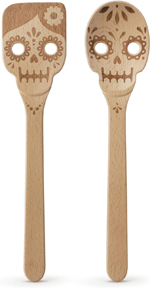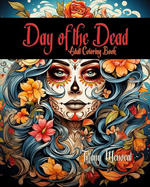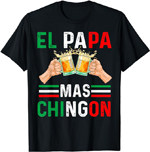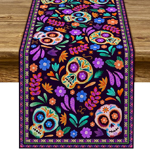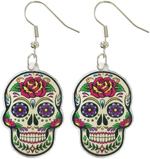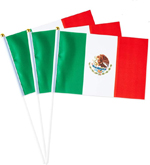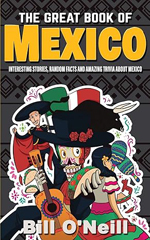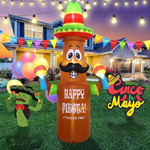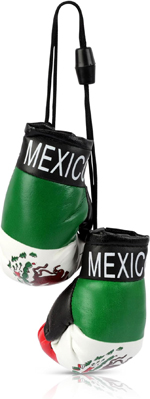Back in history, after the arrival of the Spaniards in ancient Tenochtitlan, the European evangelizers were in charge of adapting the winter ceremonies in honor of the god Huitzilopochtli by creating a preamble to the Christmas celebration, as a manifestation of the Catholic faith. At present, Mexicans keep alive these religious traditions during the Holidays, celebrating Christmas honoring the nativity of Jesus with nine days of the Mexican "Posadas" parties leading up to Christmas Eve, which in Spanish is called "Noche Buena" (Holy Night).
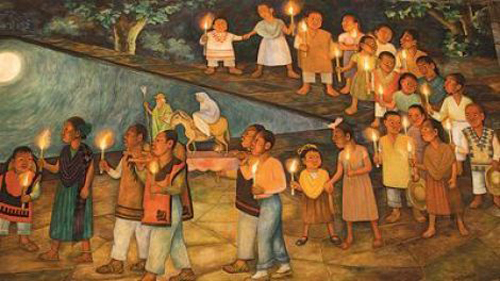
Niños pidiendo posada, 1953 by Diego Rivera
at Children Hospital of Mexico, Mexico City.
The Mexican "Posadas" are held by Mexican families one evening in each of their homes from December 16th through December 24th. Traditionally, in the celebration of the "Posada" begins at dusk, with the procession of those who personify the pilgrims, who usually carry the images of Saint Joseph and the Virgin Mary emulating their pilgrimage in the courtyard of the house. During the procession, the pilgrims sing the litany and hold small lighted candles and when the chanting of the litany ends, the pilgrims approach the door of the house to ask for an inn, while the group representing the innkeepers waits inside the house listening to the request of the pilgrims; immediately afterwards, the innkeepers engage in a dialogue in the form of sung verses or Christmas Carols, with the pilgrims until finally the inn keeper hosts open the door and welcome the pilgrims inside.
Once the pilgrims have entered the house, the images of the Virgin Mary and Saint Joseph are placed on an altar, around which all the participants of the "Posada" gather to perform the last prayers. At the conclusion of the religious prayers, the "Posada" host's family distribute among the guests the famous "Bolsitas" (Bags of Christmas Bonuses), within which are included candies and winter seasonal fruits.
Then the "Posada" will continue with the culminating moment of the "Posada" that happens with the cheerful socializing and breaking of the piñata, which is animated with different songs that have the purpose of encouraging those who try to break it to release its content. As each person takes turns swinging at the piñata, onlookers sing an encouraging verses:
No quiero oro, ni quiero plata, yo lo que quiero es romper la piñata".
"I don't want gold, I don't want money, what I want is to break the piñata."
"Dale, dale, dale, no pierdas el tino, porque si lo pierdes, pierdes el camino…
"Hit it, hit it, hit it; don't miss the shot,Because if you miss it, you'll lose the way."
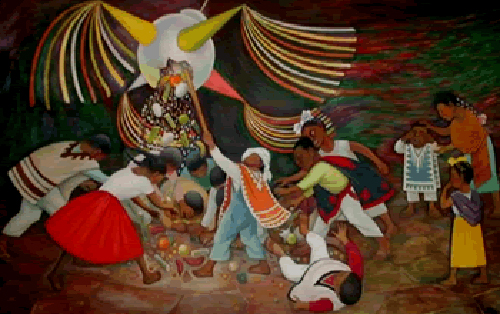
La Piñata, 1953 by Diego Rivera
at Children Hospital of Mexico, Mexico City.
Then, all return inside to eat, drink, and be merry, indulging in a Traditional Mexican Fruit Punch, which is a traditional hot drink. Mexican families will have a large pot simmering on top of the stove with that sweet punch full of fresh and dried fruits like tejocotes (a small yellow fruit that resembles crabapples), guavas, orange, apple, tamarind, prunes, while the aromas of cinnamon, anise, peppercorn, clove and piloncillo (raw sugar cane) float in the air. If it is served with a shot of tequila, brandy or rum, it is called "Ponche con Piquete". The Christmas Punch is an essential part of Christmas in Mexico! Everyone will lift a glass of Ponche, and toast! A great representation of Traditional Mexican Posada can be observed in the Diego Rivera's Mural Painting "Niños pidiendo posada" (1953). Diego Rivera Artist, is considered the great illustrator of Mexican History and Culture. Another extraordinary mural is "La Piñata" (1953), both Mural Paintings can be founded at Children Hospital of Mexico in Mexico City.
Art played an important role in creating an artistic visual image of our Mexican traditions, values, people and culture developing and building meaningful and positive connections between Mexico with the world. Best wishes and blessings to the International Community. Judith Villalón Saucedo 12/14/2020
*** Stay informed about the local Mexican community by signing up for the free Mexican eNews mailings. You can select other specific groups as well. It's easy and free.
Fill out the form for the free Mexican eNews. ***
Top of Page
Back to Cleveland Mexicans
Back to Ethnic Holiday Traditions |



